In 2022, POP added 3 new orchard sites to its list of partners: Fernhill Food Forest, FDR Park, and Urban Creators. In all, 48 of 66 POP partners (72%) participated in our annual Partner Survey in November and December, including 37 of 51 full partners (72%) and 11 of 15 supported partners (73%). This is below our target of 80% survey participation which is typically achieved, but in line with participation since the pandemic. A few respondents included information compiled for multiple orchards that they or their organizations steward, so some numbers and responses were manipulated to best average and extrapolate data.
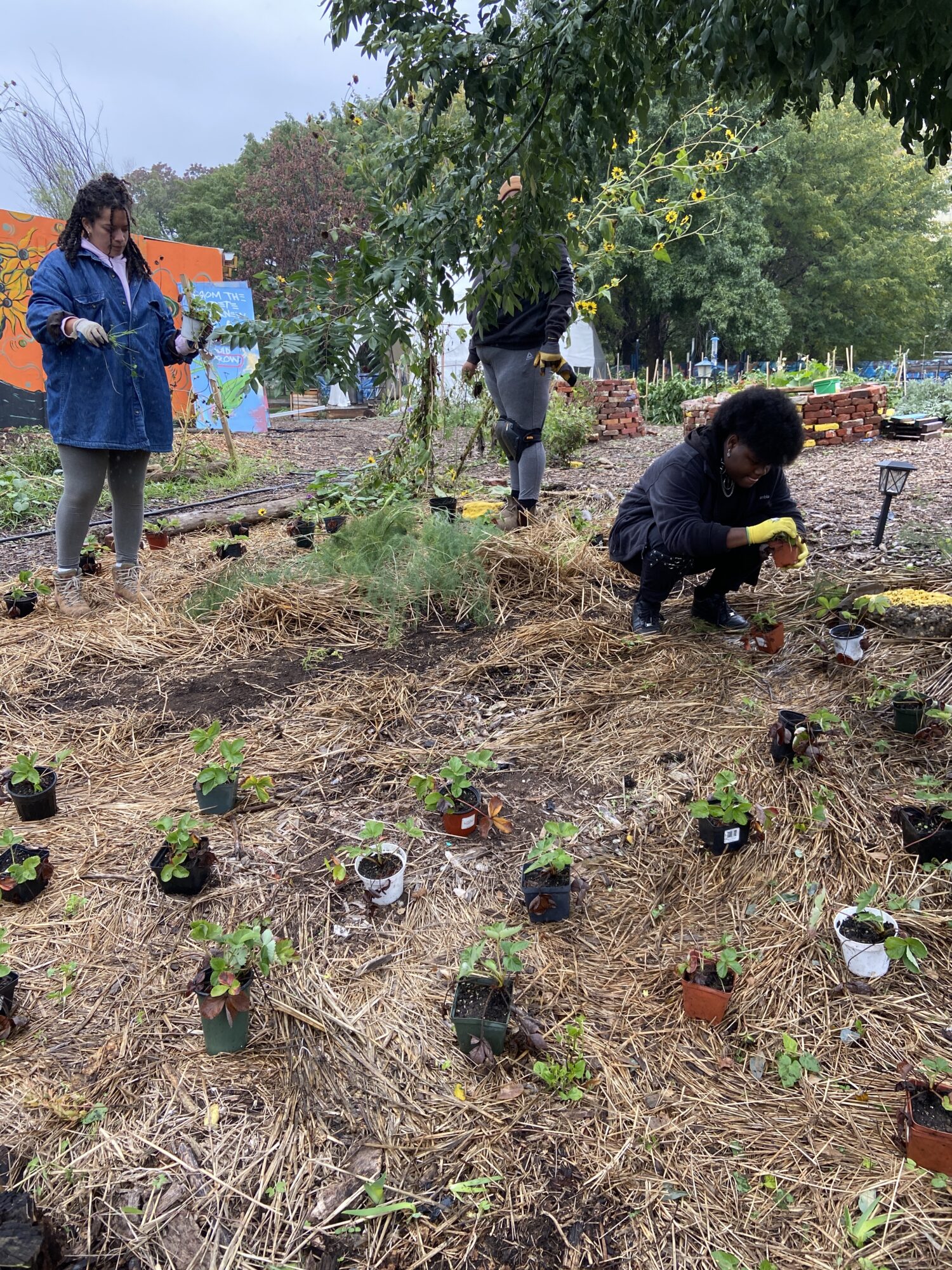
Organization Demographics
POP is striving to take a more equitable approach to our work by centering support and distribution of resources towards disinvested communities. Out of 43 responses, 16 partners reported having BIPOC (Black, Indigenous, Person of Color) leadership. Out of 43 responses, 23 of our partners reported having paid staff on site.
61% of the sites who reported shared that at least some members of their community speak Spanish, making the development of Spanish language orchard care resources a priority. 29% reported other languages such as Mandarin, Hindi, Cantonese, Arabic, French, and Vietnamese.
Orchard Value
Community members involved with POP sites were asked to assess the value of their orchard spaces based on six different categories: gathering and community space, community health and nutrition, learning opportunities, beauty and neighborhood greening, food production and distribution, and environmental impact. This is to gauge what remains most important to partners and can allow POP to further promote those aspects most favored.
Each category had five different ranking options: highest value, high value, moderate value, low value, and lowest value. Participants were asked to choose a value ranking in each category for their respective orchards.
Overall, learning opportunities scored the highest value at 43% amongst the participants that took the survey. Second to that was gathering and community space, which scored 33% at the highest value, followed by beauty and neighborhood greening, which scored a high value at 48%. Community health and nutrition scored 43% at the high value. Food production scored the lowest at 26% for moderate value.
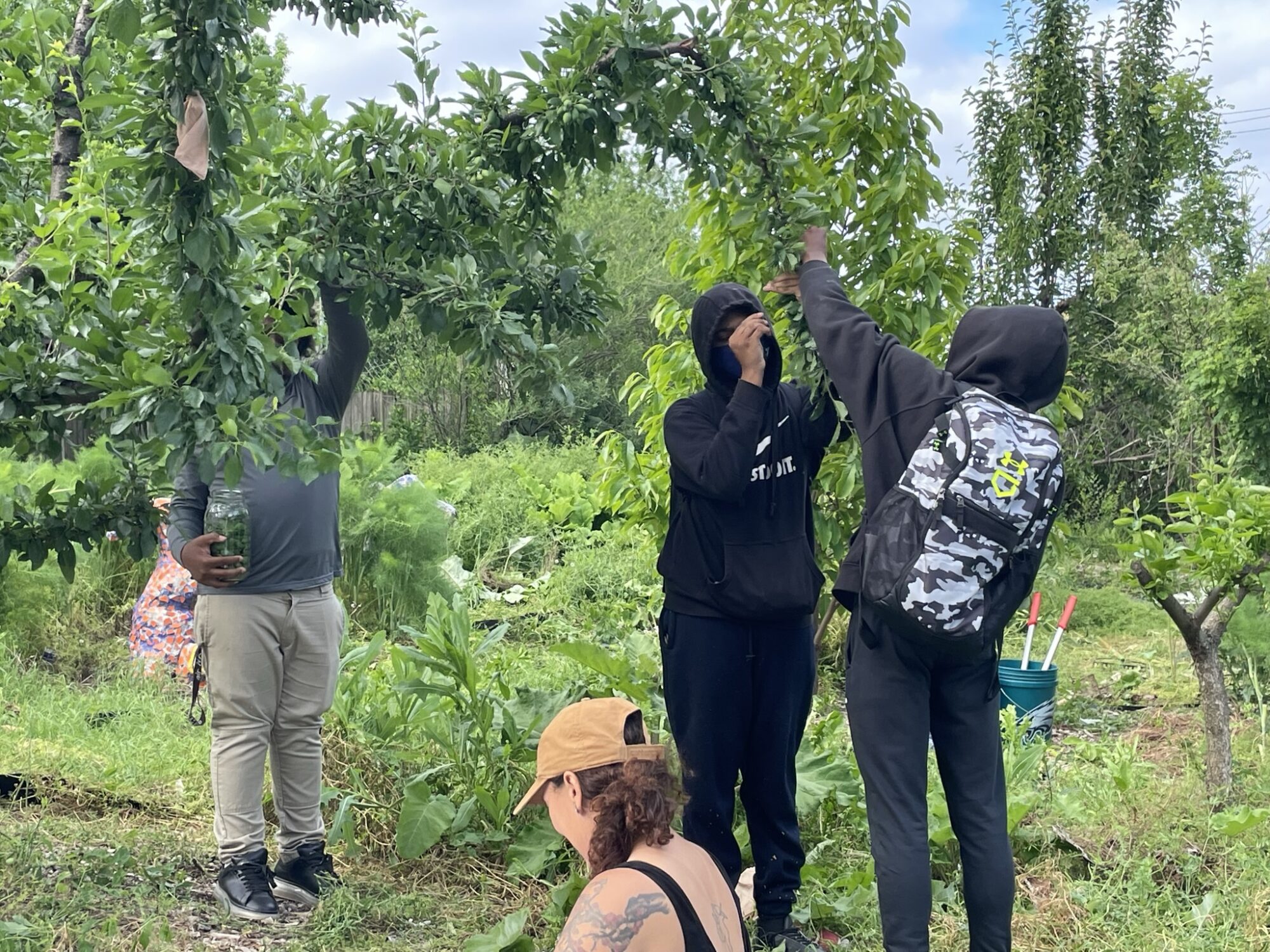
The story section of the survey asked participants to tell a story that illustrates a more personal take on the value their orchard brings to themselves and the community. A common theme was the learning opportunities and curiosity that the spaces spark with passersby, kids, and community members. Many of the participants mentioned how the fruits are unfamiliar to people so the space allows people to learn about the fruit that can grow in their own “backyard”. Many youth programs affiliated with the growing spaces gain a lot from the orchards, ranging from learning about new fruits, enjoying the outdoors, witnessing wildlife, and bonding with each other through physical work. The majority of the respondents mentioned the joy and beauty the spaces bring to the neighborhood. Overall, based on the responses, the orchards offer a healing, communal refuge for many community members.
Community Involvement
A set of questions were asked to assess the number of people involved with and affected by our orchards. Surveys reported:
- A total of 261 people participated regularly (at least monthly) in orchard care throughout the city in 2022, down slightly above the reported total of 300 in 2021. Prior levels were 287 in 2020, 337 in 2019 and 428 in 2018.
- 2,870 people were reported to have participated at least once in orchard care throughout 2022, an increase from 2021 when 2,345 people were reported to have participated at least once. Prior levels were 745 in 2020, 3,072 in 2019, and 2,404 in 2018.
- In 2022, we asked partners both how often the orchard was checked on, including monitoring for pests and diseases, and how often organized maintenance was carried out. A similar percentage of respondents, 53%, monitored their orchards at least weekly during the growing season (compared to 56% of respondents in 2021). More partners monitored their orchards daily: 11.6% in 2022 compared to 7% in 2021. More partners carried out organized maintenance more frequently in 2022, with almost 21% of respondents doing this weekly compared to 8.7% in 2021, however similar percentages had organized orchard maintenance work days at least once per month (74% in 2022 compared to 76% in 2021).
- Monthly orchard attention and volunteer workdays is a main component of POP’s recommended maintenance plan, with some groups returning to the practice of hosting outside volunteer groups. In 2022, fewer partners reported never working with outside groups (21% compared to 30.5% in 2021); however even those that started working with outside groups still take this on rarely, and between 2021 to 2022 similar percentages reported working with outside groups occasionally or often (at least monthly), about a 50/50 split. The group most often named as working with orchard partners continues to be PowerCorpsPHL, a youth workforce development program run in partnership with Philadelphia Parks & Recreation.
- Possibly due to climate impacts on harvest totals, fewer people were reported to have tasted something grown in a POP orchard: 4,656 vs 6,933 in 2021. This compares to 3,895 people tasting something grown in a partner orchard in 2020, 6,532 in 2019 and 4,435 in 2018.
- 6,576 used a POP orchard as a gathering space, a slight decrease from 2021 when partners reported a total of 7,306 people. This further compares to 3,699 in 2020 (13,225 in 2019, 8,923 in 2018 and 5,386 in 2017). Outdoor time and gardens have continued to serve many with a much needed nature break and safe way to connect with others.
- 2,183 people were reported to have participated in educational programs at orchards throughout 2022. In 2021, partners reported 2,055 people, a big increase from the 544 people reported to have done the same in 2020. However, these numbers are still lower than what had been reported in prior years (4,031 in 2019, 7,190 in 2018, and 3,954 in 2017). We continue to look forward to the return and rebound of garden education!
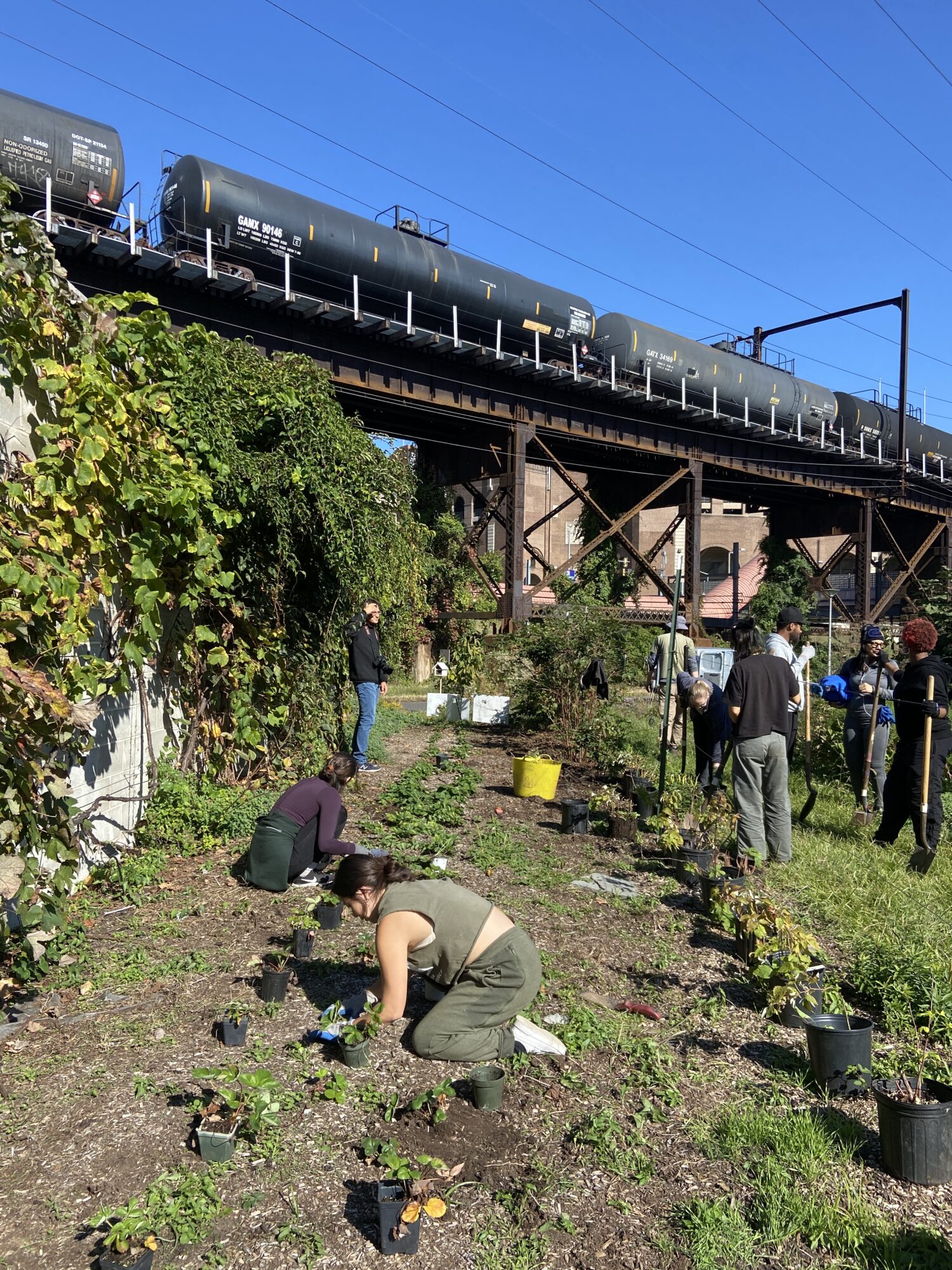
Various orchards welcomed school groups, hosted end-of-season harvest parties, provided shade for story-telling, served as a host site for a little free library, and offered numerous ways for families to connect to nature and our local food system. One partner shared that new paths added to the food forest have invited more people to stroll through, and made it easier to harvest! Some additional ways orchards were enjoyed included: connecting BIPOC students from college and K-12; providing festive locations for holiday lights; improving the neighborhood’s green infrastructure; and hosting concerts.
Distribution
Distribution methods vary greatly from one group to another, as expected from distribution plans submitted in partner applications and the varying missions of partner orchards. There are orchard partner’s whose yields are 100% harvested directly by or distributed to community members for free, some yields contribute to a variety of partners’ farmers markets and CSA memberships, some partners turn yields into value added products, and some yields are completely or partially donated to emergency food services.
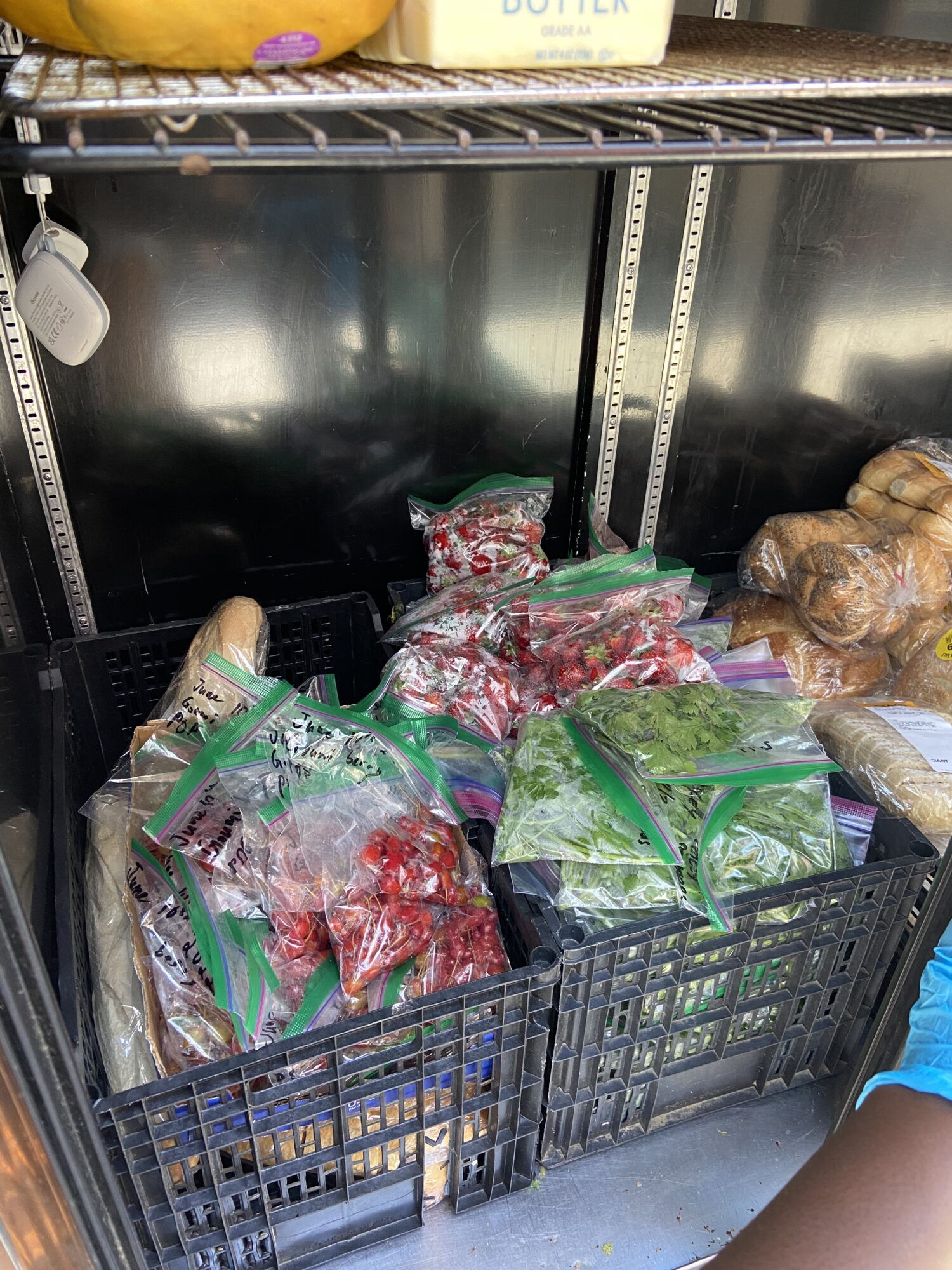
2638 pounds of food from community orchards was made available free to the community last year, or about 49% of the total yield across reporting partners (25% in 2021, 49% in 2020, 48% in 2019, 51.5% in 2018). If averaging distribution methods across all partners, each partner weighted equally, 71% of partner harvests are slated to be harvested directly by or distributed to community members for free either onsite or through community fridges or outside emergency food service organizations (68% in 2021, 61% in 2020, 69% in 2019, 70% in 2018).
Taking into account yields and distribution methods reported by each partner, total produce yielded by community orchards in 2021 was distributed in the following manner:
- 66% was harvested for free by or distributed to community members (31% in 2021)
- 6% was sold at on-site farmstands (24 % in 2021)
- 3% was sold off-site at farmers’ markets (16 % in 2021)
- 7% was donated to emergency food pantries, and (10% in 2021)
- 1% was sold via Community Supported Agriculture (CSA) shares (8% in 2021)
- 7% of ripe fruit went unharvested or was lost to pest and disease (7% in 2021)
- 6% was processed into value-added products (4% in 2021)
The percentage of the yield harvested for free by or distributed to community members was at an all time high in 2022, increasing by over 100% over the previous year. The percentage of food sold at farmstands, farmers markets, and CSAs dropped to its lowest rates. This is in part due to the selection of partners that participated in the survey, but also perhaps is influenced by the shifts in how community fridges allow us to share food more easily with neighbors.
Orchard Production
In 2022, POP partners reported harvesting 4620 lbs of fruits and herbs from their community orchards (6264 lbs in 2021, 2924 lbs in 2020, 4437 lbs in 2019).
This section is for the evaluation of yield by plant type, gathering data on actual production levels where available. It is difficult to accurately track yield between spaces that are used in a wide variety of ways by different partners, including public spaces, organizations with limited or no staff, and where free harvest from community members is encouraged.
Young vs Mature Orchard Yields
Every few years, we attempt to collect data from our partners that allows us to see the trends of harvest yield per tree for both young and mature orchards. The workhorses of the orchard are clear – figs, paw paws, and persimmons.
For young orchards (up to 5 years old) we have seen that figs showed the highest return per fruit tree by far, followed by paw paws and persimmons.
For mature orchards (6 years plus) persimmons showed the highest return per fruit tree, followed closely by paw paws, with figs coming in a solid third.
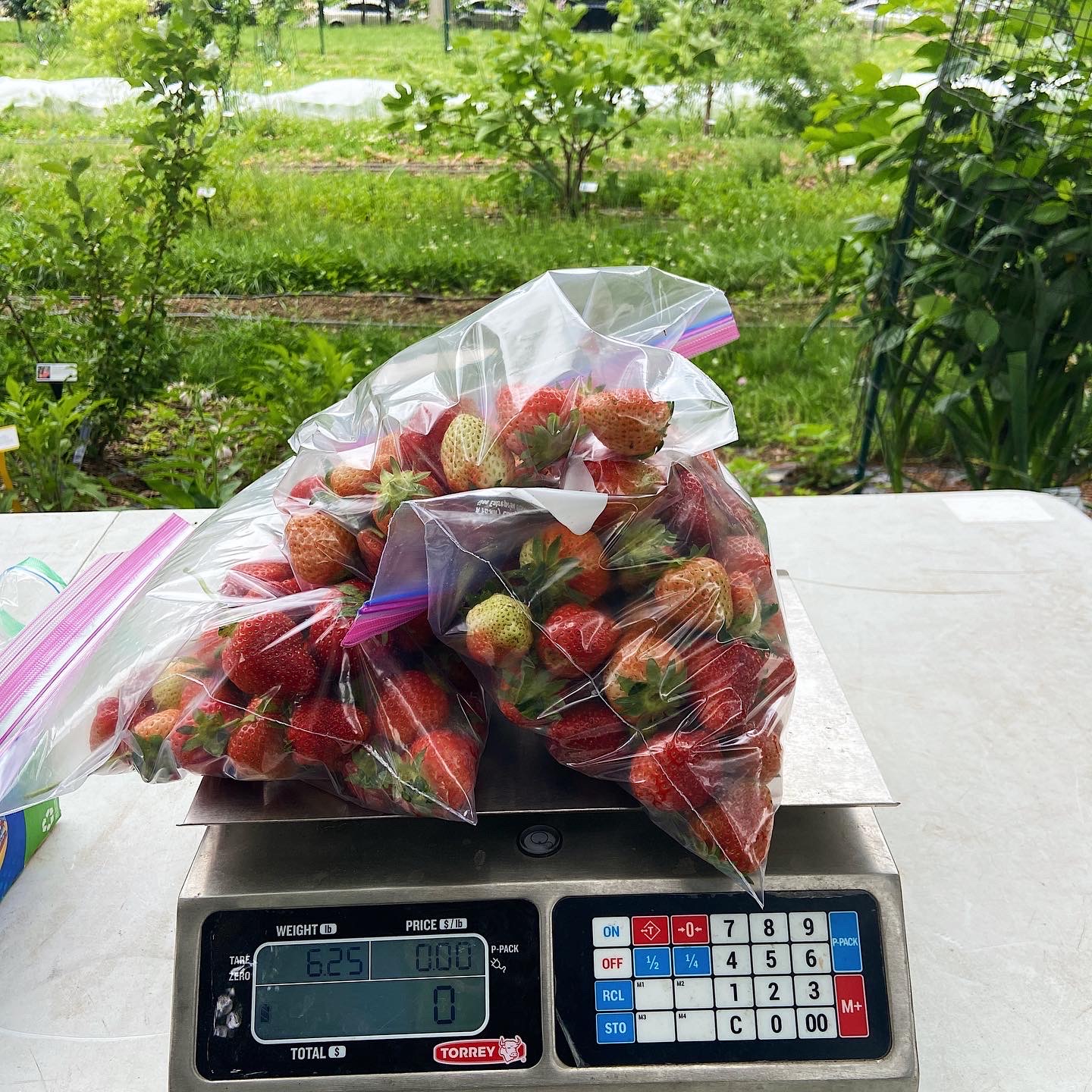
2021 Top Ten Orchard Producers
- Paw paws: 1818 pounds (1799 in 2021) Record Yield!
- Figs: 587.6 pounds (736 in 2021)
- Blackberries: 344.45 pounds (374.75-2021)
- Persimmons: 332.6 pounds (410-2021)
- Apples: 216 pounds (194.33 in 2021)
- Strawberries: 197.24 pounds (46-2021)
- Raspberries: 124.5 pounds (236.5-2021)
- Asian pears: 114.6 pounds (357.5-2021)
- Peaches/nectarines: 97 pounds (425 in 2021)
- Elderberries: 91.35 pounds (79-2021) Record Yield!
Production Challenges
We saw a significant drop in yields in 2022 most likely due to two factors – late frost and drought. With climate change, we expect both these things to become more prevalent. With a late frost (April 18th in 2022) any fruit trees that are in bloom will essentially lose their crop for the year, unless protected by a microclimate. In 2022, this most dramatically affected plums (but perhaps also peaches and pears) dropping reported plum production from 456 pounds in 2021 to just 24 pounds in 2022. With drought, there is not only a deficit of water but an excess of heat. Beyond reducing plant growth and fruit size, lack of water will also reduce the following year’s fruit set. In 2022, 40% considered watering a production challenge versus 26% in 2021. And tragically, we saw an uptick in squirrel and bird predation on the fruit that did manage to grow, being the great source of food and water that it is. In 2022, 60% noted that squirrels were a production challenge, up from 41% in 2021.
Orchard Education
POP offers a wide variety of educational opportunities for our partners, volunteers affiliated with POP orchards, and Philadelphia-based community members. Our most comprehensive educational offering is the 4 part “Community Orchard Resilience Education” (POPCORE) course, which we offer every year, virtually as of Covid, but in person prior to that. We asked survey participants what POP educational events they had attended and if not, whether they are interested in attending them.
For POPCORE, we asked survey participants what sections they had attended. The four sections of POPCORE are: Eco-Orchard Care and Pruning, Eco-Orchard Pest and Disease Management, Eco-Orchard Harvest and Use, and Eco-Orchard Design and Implementation. For the Orchard Care and Pruning section, 41.9% of the participants said yes. 51.2% of the participants said no, but interested. For Pest and Disease Management section, 32.5% had attended. 60.5% said no but interested. For Eco-Orchard Harvest and Use, 23.3% of participants had attended this section of POPCORE. 65% said no but interested. For the last section, Eco-Orchard Design and Implementation, 23.3% had attended this section. 58.1% of participants had not attended but are interested in attending. 18.6% said no and not interested in attending. Overall, it appears that Orchard Care and Pruning was the most attended section of POPCORE. It appears that the attendance declined with each consecutive section. The two last sections, Eco-Orchard Harvest and Use along with Eco-Orchard Design and Implementation held the lowest attendance. Eco-Orchard Harvest and Use had the highest interest among participants.
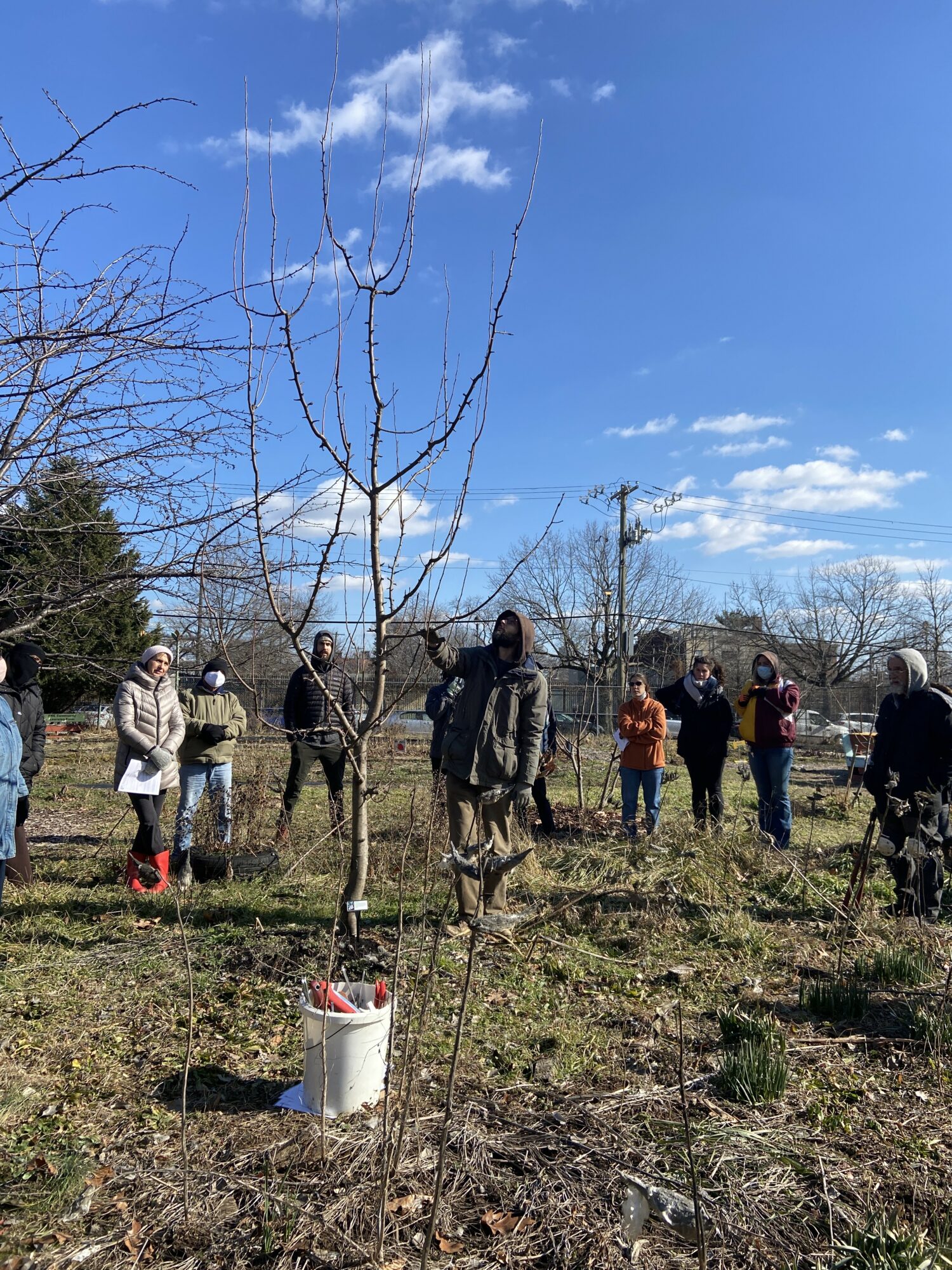
POP hosts Harvest-Ed workshops, often taught by community members who can share their culinary, cultural, and medicinal knowledge on lesser known fruits, nuts, and herbs that grow in this region. 23.3% of participants had attended a POP Harvest-Ed workshop. 65.1% of participants had not attended but were interested in attending. The majority of people seem interested in the program and would like to attend a Harvest-Ed workshop in the future.
POP is always searching for spaces to host our Harvest-Ed workshops. As a way to expand our location options for hosting as well as involving our partners more deeply in the program, we asked our partners whether they were interested in hosting a Harvest-Ed workshop. 60.5% of partners expressed interest in hosting a Harvest-Ed workshop at their respective orchard spaces.Only 39.5% of participants said they were not interested in hosting. This could be due to a myriad of reasons, including not having a community consensus, no covered area for rain, and no access to bathrooms or running water.
POP is always interested in what the community wants to learn so we asked our partners what fruits, nuts, herbs, processes, or themes they would like to see covered by POP harvest. There were a few participants who mentioned herbal tea and medicine. A few participants mentioned fruit processing and canning with berries and asian plums. One participant wanted to learn more about the goumi and how to eat it. One person expresses interest in rosehips and how to use them for rose hip tea and rose water. One participant expressed interest in more horticultural and ecological topics, including fungi, soil science, agroecology, and rewilding.
POP put out a video series on Fruit Tree Pruning this year, filmed by Ander Kazmerski, produced by Marc Steiner, and edited by POP staff. 44.2% of participants had seen the videos and expressed interest in more videos. 48.8% had not known about the videos but intended on watching them now. Almost half of the participants felt positively about the video series. The survey results for this section shows that video lessons can be an effective learning tool for people.
After reaching out to partners about how POP can provide stronger guidance, there were similar patterns in the responses we received from year to year. POPCORE is still of value to many of our partners and our new video series also shows promise for offering easily accessible education. Harvest-Ed could be more attended but many partners appear to still value it. Many of these educational opportunities are of interest to our partners but it appears many aren’t aware of them. This could be improved by increased outreach on POP’s end.
Last year’s survey showed some recurring themes in knowledge gaps and challenges in orchard care shared amongst our partners. These knowledge gaps included: pest management, squirrel deterrents, harvest processing, pruning, and community engagement. It seems that any gaps in knowledge regarding these issues can be at least partially filled in with POPCORE, Harvest Ed, and other educational workshops.
Orchard Challenges and Needs
This section evaluates orchard challenges and needs by collecting data on the orchard pests, diseases, capacity challenges and environmental pressures partners face and identifying more specifically where partners need additional or ongoing support.
On average, when asked to rate challenges in the orchard from 1-5 (1= very easy and 5= very challenging) , responses from partners averaged out to a 3, which is the same reported average from partners last year. 54% of respondents believed it was harder to maintain their orchards in 2022 which is a significant decrease from reports last year (67% in 2021) and in some previous years (30% in 2020 and 56% in 2019)
As reported in the “Orchard Production” summary, late frost and drought resulted in a decrease in yields. When asked to provide specific examples of situations that impacted orchard care, of the 18 partners that responded, 33% either reported late frost or drought as a major challenge in 2022. Periods of drought may often welcome predation from birds and squirrels looking for additional sources of food and water. As previously mentioned in Orchard Production, reported bird challenges increased to 37% (compared to 19% in 2021) and squirrel challenges increased to 58% (compared to 41% in 2021).
The most commonly reported challenges in 2022 were: plant diseases (63%), squirrels (58%), amount of time available/other responsibilities (49%), insect pests (44%), watering (40%) and birds (37%). A notable decrease in challenges this year is time available/other responsibilities, which took the lead in orchard challenges at 57% in 2021. This could be due to the uptick in community engagement with more partners organizing consistent maintenance, hosting outside volunteer groups and having more staff capacity to monitor orchards on a more regular basis.
Plant diseases were the highest reported orchard challenge with fire blight (28% compared to 17% in 2021), cedar apple rust (26% compared to 17% in 2021) and peach leaf curl (23% compared to 33% in 2021) taking the lead as the hardest hitting diseases. It appears that in 2022, diseases that impacted pome fruit were more prevalent compared to 2021 with fruit such as the Asian pear: 114.6 pounds (357.5-2021, 143.6-2020, 335.9-2019) and European Pears: 39 pounds (278-2021, 35.6-2020, 137.1-2019) reporting significantly lower yields. More plant diseases reported included:
- Brown Rot: 19% (compared to 26% in 2021)
- Leaf Spot: 19% (compared to 24% in 2021)
- Powdery Mildew: 16% (compared to 30% in 2021)
- Gummosis: 16% (compared to 11% in 2021)
- Black Knot: 7% (compared to 4% in 2021)
- Pear Rust: 7% (compared to 2% in 2021)
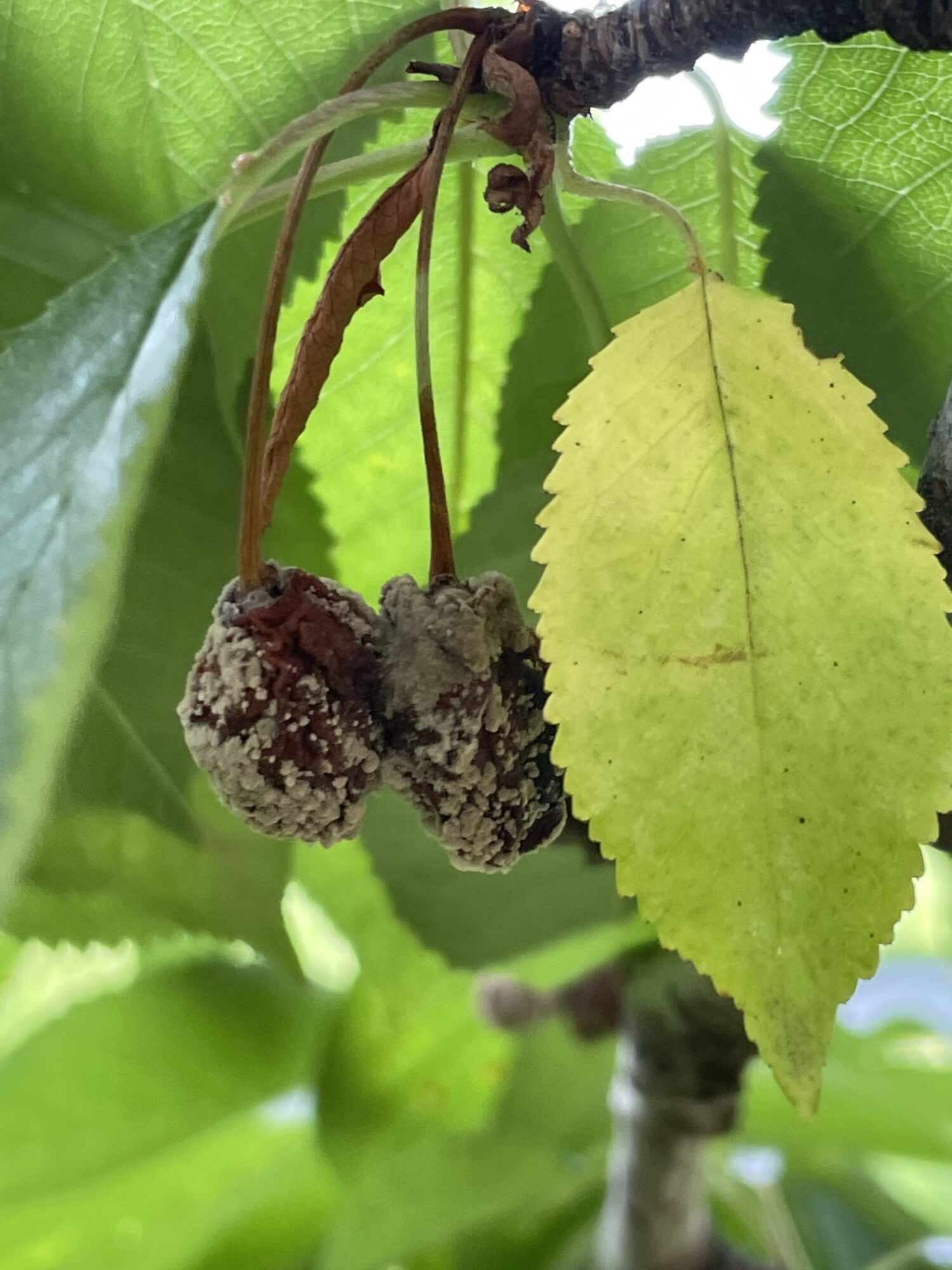
The pest challenges most commonly reported from partners in 2022 included the spotted lanternfly (47% compared to 39% in 2021), aphids (42% compared to 35% in 2021), plum curculio (21% compared to 15% in 2021), mosquitos (21% compared to 26% in 2021), peach tree borer (16% compared to 13% in 2021) and oriental fruit moth (14% compared to 19.6% in 2021). When reporting the percentage of harvest lost to pest and disease challenges and non-insect pests, over 25% of partners reported losing about 10% of their yield for both (compared to 28% reporting 0% of harvest lost to pest and disease challenges and 24% reporting 10% lost to non-insect pests in 2021) ; however, of the 21 partners that expanded on additional production challenges, 33% mentioned non-insect pests as a significant challenge along with the drought during the summer that contributed to non-insect pests seeking more water and food through orchard fruit.
When asked if partners would like more assistance identifying challenges, 47% said No (compared to 32% in 2021), 16% said Yes (compared to 15% in 2021), 23% said Somewhat (compared to 24% in 2021) and 14% said Not Sure (compared to 28.3% in 2021). POP has continued its goal to offer and expand resources including blog posts, an increase in social media posts pertaining to orchard care, educational videos, uploading virtual workshops such as the POPCORE series and providing weekly to bi-weekly emails alerting partners on local pest and disease challenges, monthly reminders for seasonal orchard care and more. POP staff also continues to schedule monthly or quarterly visits to sites to provide support for orchard care and check-ins.
60% of partner sites offered specific feedback when asked “what might make next year better?”. Of that, 23% mentioned making some sort of improvements to their watering system or regiment to support orchards through summer droughts, a reality sites across the city may be facing more regularly due to climate change. POP offers extensive resources on orchard care, but could take this feedback as an opportunity to expand education on what orchard care during climate crises looks like, whether that’s supporting partners in setting up irrigation systems or sending reminders to water during periods of drought. 19% reported wanting to develop better integrated pest management specifically for non-insect pests such as squirrels and groundhogs.This is an ongoing problem across the city that even POP Staff has been experiencing as a challenge at The POP Learning Orchard. POP is currently experimenting with IPM methods such as fruit bagging with peppermint oil soaked bags, deer sprays and motion-detection sprinklers. We are hoping that we will be able to implement some of these methods at partner sites as we also see what works against non-insect predation. Another 23% mentioned volunteer and staff development around orchard care; that ranged from training on-site staff on more of the technical aspects of orchard maintenance to needing more consistent volunteer support. POP is continuing to fine-tune and expand it’s LOV program and offer more consistent workday support with volunteers to targeted sites in the city that expressed needing additional support in 2021. We are hoping with the expansion of more education materials, specifically targeted on local orchard pests and diseases, staff and volunteers at partner sites will feel more confidence around navigating common pest and diseases issues in the city.
POP Publications and Resources
POP released a new pruning video series early in 2022. Close to half of partners (44%) reported having watched the series, and another 49% hadn’t seen them yet but were interested in learning more. We are excited to continue developing video resources on orchard care for our orchard partners and general public. This year we have been partnering with Big Picture Alliance to develop a video series on Pest and Disease management that we are very excited to share out with everyone, tentatively in October 2023.
Lead Orchard Volunteers
The POP Lead Orchard Volunteer Program connects partner sites with dedicated volunteers trained, with the support of POP, to provide consistent, long-term involvement with their orchard, while expanding their knowledge and hands-on experience in orchard care.
In 2022 POP had 28 LOVs (down from 34 in 2021) at 18 sites (an increase from 16 sites in 2021) and 17 sites had confirmed they had an LOV at their community orchard. 11 partner respondents (26%) were not sure if they had a dedicated LOV for their orchard (compared to 22% back in 2021). Many of the active LOVs in 2021 had various reasons why they had to depart from the LOV program, most often because of scheduling conflicts or personal matters. Lead POP staff can offer support around LOV transitions by communicating to partners of an LOVs departure and offering volunteers to sign up for workdays in the interim period between an established LOV’s departure and the placement of a new one.
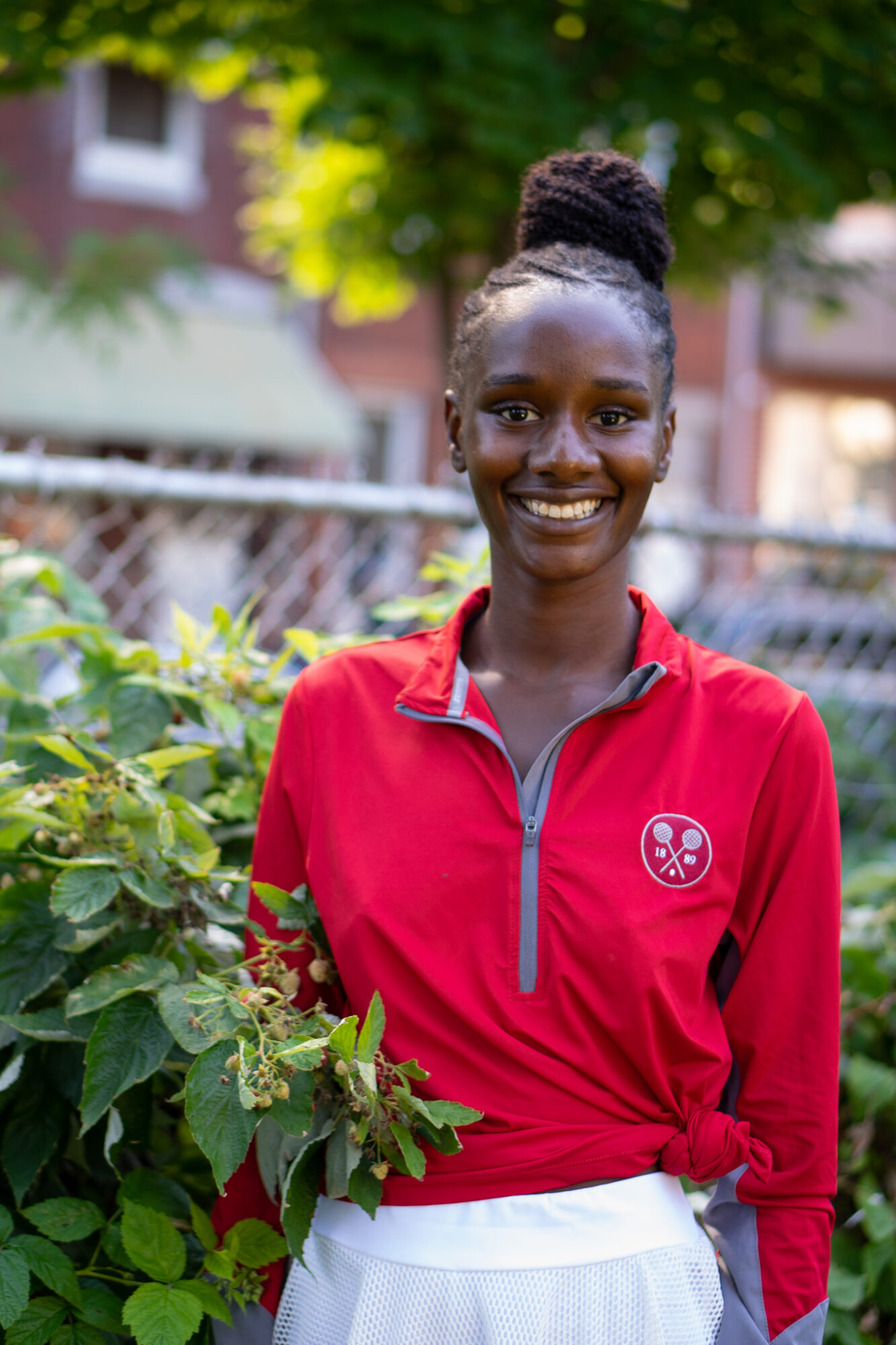
When asked what could make the LOV program better, notable feedback included:
- Recruitment during mid-August to early September during the start of the school year to encourage engagement from students
- Having more than one LOV on site for additional support
- More LOV sensitivity to site needs which may look like collaborating with a partner site and LOV to make sure monthly or even weekly orchard tasks to be completed are clear and understood by both parties.
- Generally expanding support to more sites
When asked if LOV engagement was beneficial to the orchard 53% reported that it was ‘very beneficial’ and 48% reported that it was ‘somewhat beneficial.’
30% of respondents reported interest in having POP help recruit LOVs for their site (down from 39% in 2021), 33% of POP partner sites are Maybe interested in having POP help recruit LOVs for their sites (up from 24% in 2021), 16% were not interested in LOV recruitment for their site (significantly down from 28% in 2021) and 21% reported that they already had community members in mind to be LOVs (up significantly from 8.7% in 2021). It is promising that partner sites already have community members in mind to help support orchards as LOVs, since those living in the communities partner sites serve are often able to provide more consistent care, have existing relationships with the partner sites and can take lead around orchard care and act as a facilitator between the partner site and POP when POP staff is not available to offer hands-on support.
This blog co-written by POP staff Sharon Appiah, Erika D’Andrea, Phil Forsyth, Kim Jordan, Simone Shemshedini, and Corrie Spellman-Lopez.
SUPPORT US! If you found this entry useful, informative, or inspiring, please consider a donation of any size to help POP in planting and supporting community orchards in Philadelphia: phillyorchards.org/donate.